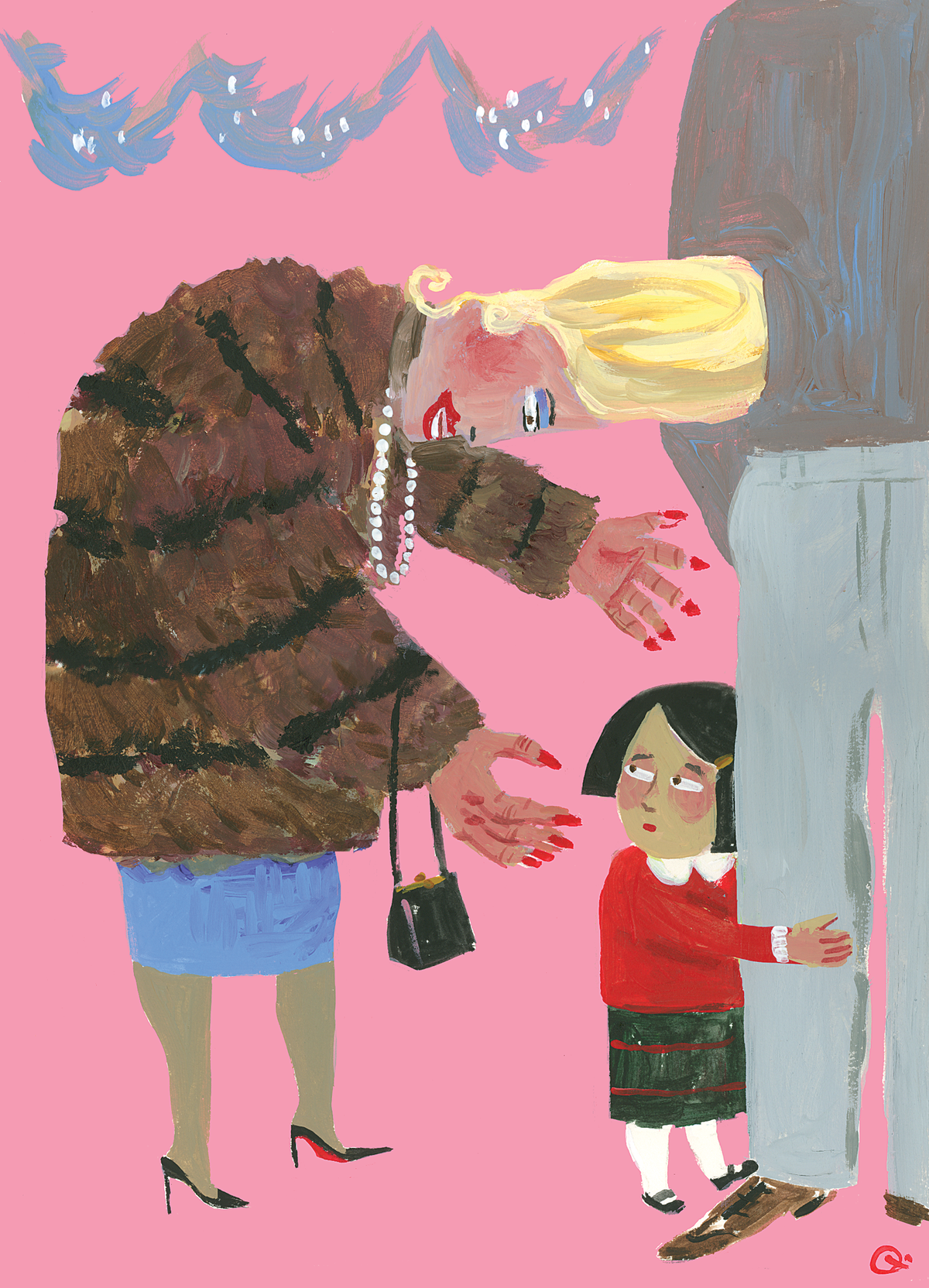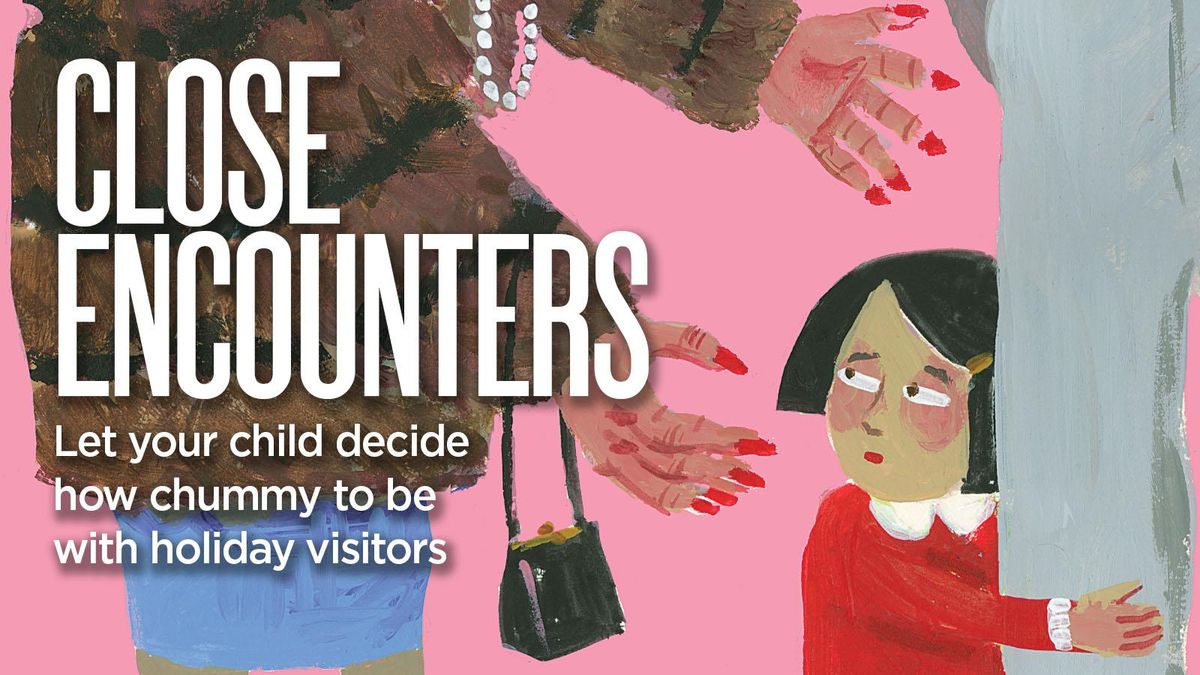Holiday hugs: Don’t force them for kids
Aunt Matilda swoops in to hug a niece she sees in photos all the time. Little Cindy backs away. While family members often span the miles to visit at holidays, close encounters with relatives from afar can pose a quandary for parents. Should you tell your children to hug and kiss people they’ve met maybe once?
In short, the best strategy is to let the kids decide – and maybe this time it will only be a high-five, say Spokane-area child counseling professionals. They also have suggestions for how to make these moments less awkward and more enabling for kids.
“In the adult world, we wouldn’t hug or kiss people immediately that we’ve only met once or twice in our lives,” said Katie Jessop, a Spokane licensed mental health counselor.
“If we’re telling children to do that, it sets it up in a weird way for them as adults in the world because it’s one rule as a child and one rule as an adult.”
Parents and other adults can ask the child how they want to greet someone: Do you want to wave, give a high-five, shake hands or hug?
“When we let children decide if they want to have physical touch, we’re also building in the safety for them understanding when touch is wrong or not healthy,” Jessop added.
“Children will be less stressed and make better choices when we give them a couple of options to choose from, so waving, giving a high-five or giving a hug lets the child be in charge of their body and learn what feels safe to them.”
Elise Hutchison is a mental health clinician at Lutheran Community Services Northwest. Her work focuses on helping build healthy family relationships and establishing boundaries.
“For a lot of families, that is a big struggle, to balance meeting the needs of your children while taking into consideration the whole family system,” Hutchison said.
“I encourage parents to do as much pre-conversation that you can with both parties, with kids and family members who are coming in versus in-the-moment coaching.” Parents can tell kids about relatives coming for a visit and gauge how they feel about that.
We sometimes make assumptions, she said, such as thinking that a child is shy when they might get excited about news of an aunt arriving. But if parents get a sense that a child feels apprehensive, they can plan ahead and talk to that relative.
“You could say, ‘She’s shy. She’s glad to see you, but she’s not a kid who enjoys that level of touch. After she warms up and spends time with you, maybe put the ball in her court.’ ” Ultimately, if a child isn’t comfortable with any touch, don’t force the issue, Hutchison added.
“It’s their body and their choice, and forcing that situation can cause a lot of undue stress. Respecting their wishes in the moment if they choose not to is what’s going to be in the best interests of the kid and of the family.”
Adults need to consider the messages sent to kids about autonomy over their bodies, Jessop said. “One of the huge realities of my job is the statistics say 1 in 3 girls and 1 in 4 boys are abused,” she said. “Those are the reported numbers.”
Statistics also indicate that 90% of abused children know their abuser, Jessop added. She said it puts children in a difficult position when we’re forcing hugs and physical interaction with people. “Then we’re not actually giving them a choice or helping them be aware of what’s safe for their body.”
“It becomes a confusing issue for children, and it’s part of why kids don’t feel comfortable telling adults when abuse is happening because it’s such a confusing thing for them.” Parents should check in on boundaries for children of any age, Hutchison said.
“Even if you have some teenage kids and you have some people come into your home for the holidays, it’s prudent to be talking to them about their personal boundaries. It’s a good time of year to make sure everyone’s on the same page.”
Michaela Jones, a Lidgerwood Elementary support specialist, works closely with the school’s mental health therapist and a counselor. She pointed to common strategies among educators and counselors to help kids if they might feel anxious around new people or experiences.
Jones suggested that it helps to talk beforehand with children about what’s upcoming in visits with unfamiliar relatives so kids know more about what to expect.
“With that example of aunt Matilda who is coming from New York, maybe a month or two in advance depending on how old the child is, you can start pulling up photos of aunt Matilda,” Jones said.
“You can say, ‘We’re going to see aunt Matilda in a month. She sent you that really cool book you love reading. We saw her last summer. Do you remember this photograph?’ So renewing that familiarity is one strategy you can use so that a child feels more comfortable.”
Jones echoed that it’s a good idea to give children choices in greetings. It’s common in schools to have posters with different options – such as symbols for a handshake or hug – for kids to point to, or educators often verbally ask kids if they want to do a high-five, handshake, hug or wave, she said.
“It’s teaching children they have options,” said Jones, adding that kids who are given choices learn they can use them in unfamiliar settings, perhaps when a neighbor comes over.
“That’s how they know with all people, when we greet, this is an option that I have, and it’s consistent across many adults. Then it feels natural when they see someone and think, ‘I kind of know you.’ ”
If an awkward moment happens and a kid doesn’t want to greet a relative, Jessop said she tries to keep in mind phrases she can use.
“One of the things I say is, ‘Little Sammy is feeling shy right now, but I’ll give you a hug,’ ” she said. “Or, ‘Little Timmy’s feeling shy right now, so maybe later.’ It gives a clear indication that it’s not going to happen right now, but it’s said not in a way that will hurt the relative’s feelings, either.”
But a choice for a kid is a win every time. “If you’re in a position as parents where you have to chose between hurting your child’s feelings or an adult’s feelings, it’s always a better move to protect the child,” Jessop said. “They’re still developing, and they don’t have the same resources that adults do.”
Another strategy is to help children understand their emotions, Jones suggested. “Like in the situation where there are lots of people,” she said. When situations are unfamiliar, “It’s easy for kids to feel overwhelmed and unsure. You can say, ‘They’re are so many family members here right now, and it’s really loud.’ ”
A conversation on the ride home could help, as well. “Probably the last strategy is the importance of reflection,” Jones added. “If you’re a family that models affection, and when a kid says, ‘I don’t want to,’ it’s important perhaps on the trip home to know what was going on and to ask, ‘What were you feeling?’ ”
Kids might share that they didn’t remember the person. Parents then can give the message that it’s OK to feel that way, Jones said, and perhaps offer a solution such as more FaceTime calls in 2020.
“Holidays come every year.”

